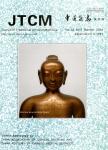Proteomics analysis of coronary atherosclerotic heart disease with different Traditional Chinese Medicine syndrome types before and after percutaneous coronary intervention
作者机构:Beijing Key Laboratory of Pharmacology of Chinese Materia RegionInstitute of Basic Medical SciencesXiyuan HospitalChina Academy of Chinese Medical SciencesNational Clinical Research Center of Cardiovascular Disease of Traditional Chinese MedicineBeijing 100000China the National Key Facility for Crop Gene Resources and Genetic ImprovementInstitute of Crop ScienceChinese Academy of Agricultural ScienceBeijing 100098China Department of CardiologyBeijing Anzhen HospitalCapital Medical UniversityBeijing 100029China
出 版 物:《Journal of Traditional Chinese Medicine》 (中医杂志(英文版))
年 卷 期:2024年第44卷第3期
页 面:554-563页
核心收录:
学科分类:100506[医学-中医内科学] 1006[医学-中西医结合] 1005[医学-中医学] 100602[医学-中西医结合临床] 10[医学]
主 题:percutaneous coronary intervention proteomics peptide mapping coronary atherosclerotic heart disease Traditional Chinese Medicine syndrome
摘 要:OBJECTIVE: To investigate the underlying protein molecular mechanisms of Qi stagnation and blood stasis syndrome(QS) and Qi deficiency and blood stasis syndrome(QD), as two subtypes of coronary artery disease(CAD) in Traditional Chinese Medicine(TCM),following percutaneous coronary intervention(PCI).METHODS: In this study, a total of 227 CAD patients with QS and 211 CAD patients with QD were enrolled;all participants underwent PCI. Label-free quantification proteomics were employed to analyze the changes in serum in two subtypes of CAD patients before and 6 months after PCI, aiming to elucidate the intervention mechanism of PCI in treating CAD characterized by two different TCM ***: Biochemical analysis revealed significant changes in tumor necrosis factor-α, high density lipoprotein cholesterol, blood stasis clinical symptoms observation, and Gensini levels in both patient groups post-PCI;Proteomic analysis identified 79 and 95 differentially expressed proteins in the QS and QD patient groups, respectively, compared to their control *** C8 alpha chain, complement factor H,apolipoprotein H, apolipoprotein B, plasminogen,carbonic anhydrase 2, and complement factor Ⅰ were altered in both comparison groups. Furthermore,enrichment analysis demonstrated that cell adhesion and connectivity-related processes underwent changes in QS patients post-PCI, whereas lipid metabolism-related pathways, including the peroxisome proliferator-activated receptor signaling pathway and extracellular matrix receptor interaction, underwent changes in the QD *** protein-protein interaction network analysis further enriched 52 node proteins, including apolipoprotein B,lipoprotein(a), complement C5, apolipoprotein A4,complement C8 alpha chain, complement C8 beta chain,complement C8 gamma chain, apolipoprotein H,apolipoprotein A-Ⅱ, albumin, complement C4-B,apolipoprotein C3, among others. The functional network of these proteins is posited to contribute to




